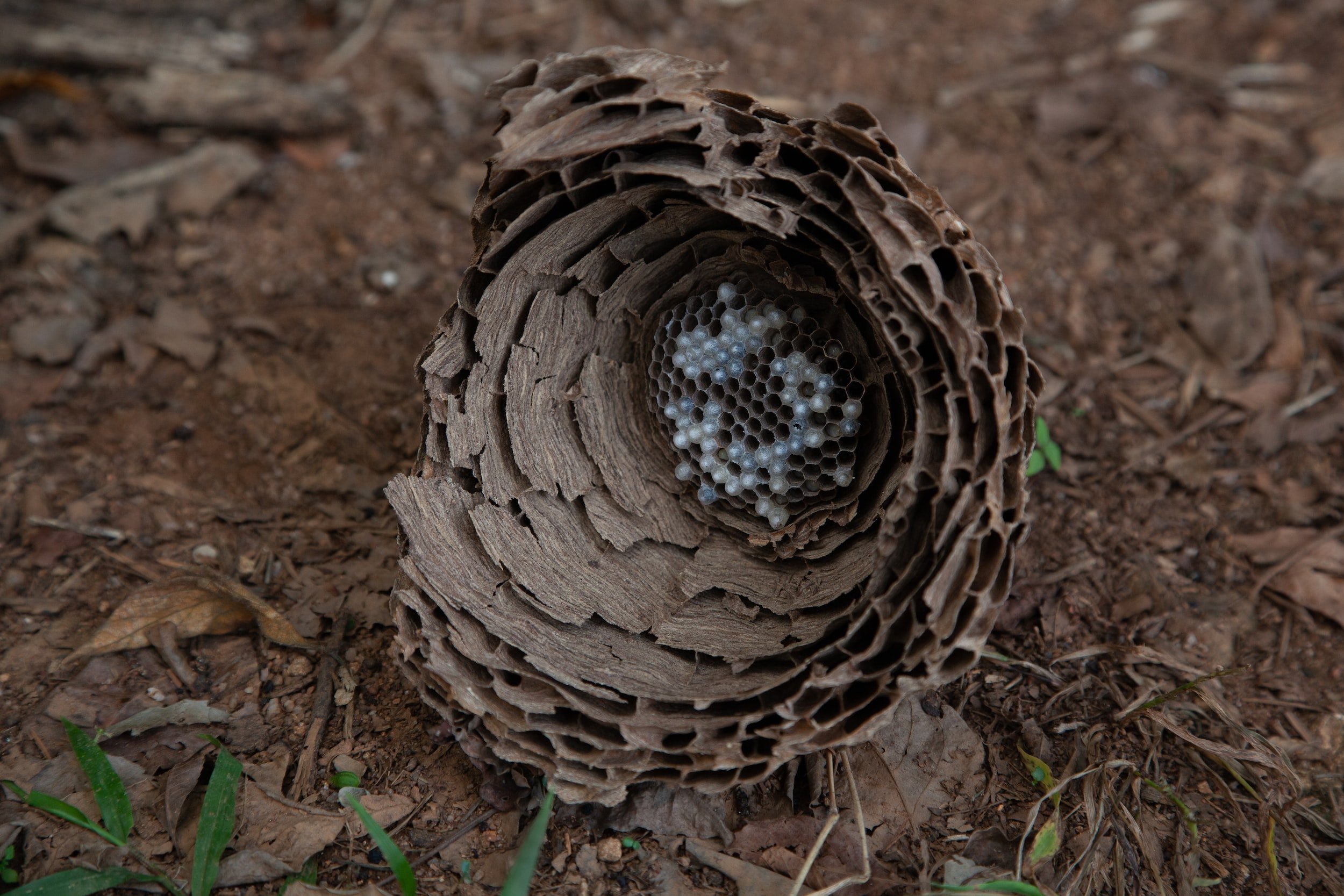Flying Insects
-
We Can Help With
✅ Wasps
✅ Hornets -
We Can't Help With
❌ Bees*
❌ Maybeetles
❌ Flies
Problems with flying insects
-
Wasps are large, conspicuous buzzing insects with yellow and black striped, wasp-waisted bodies, 10-15mm long. They have a sweet tooth at one end and a painful sting at the other.
The larger queen wasp hibernates over winter, and then makes a new nest in the spring in which to lay her eggs. She feeds her young on insects until they grow into the worker wasps, around three to four weeks later. Workers, all sterile females, forage for over a mile in search of food. A single nest can produce 30,000 wasps in a year.
Nests can be located within wall or roof cavities, lofts, air bricks, garden sheds, trees, thick hedges, bird boxes, garages and out-buildings.
Care should be taken when dealing with wasps as they have a potent sting and can attack in large numbers if disturbed or threatened.
The risk from wasps is particularly high towards the end of summer – it is preferable to treat a nest earlier in the year before wasps become more aggressive.
Hornets are very similar to wasps but much less common. They are typically larger than wasps, with brown and yellow bodies, rather than the black of wasps. They are similarly aggressive with a potentially serious sting and care should be taken near their nest.
-
As far as possible, we actively avoid exterminating bees. Bees hold a crucial role in pollinating our plants and trees, and their numbers are in decline across the UK.
There are two common types of bee in the UK, the larger, fluffy bumble bee can often be heard before he is seen pottering among your flowerbeds. They honey bee is smaller, quieter and a dark golden colour.
Though both types of bee are able to sting, this is their last line of defence. Once they have used their one and only sting on their perceived attacker, the bee will die.
In spring you may notice a swarm of bees on a tree in your garden. The swarm is feeding on the sap of the tree and will typically move on within 24 hours without causing any damage to the tree.
In exceptional circumstances we may agree to deal with a bee hive if it is posing a direct and serious risk to human health.
Useful information for our visit
We will schedule an appointment for one of our technicians to visit you. Please let us know if there are any parking restrictions at your property.
Your technician will assess the environment upon arrival. We have our own tools but, in advance of our arrival, any assistance you can safely provide to give us clear access to the problem area is much appreciated.
If we are treating a wasp or hornet nest we recommend closing all windows and doors before, during, and for several hours after our visit. Please remain indoors with any pets while we treat the nest. The wasps or hornets will be extremely aggressive after our treatment and you will notice increased activity near the nest afterwards. The length of time that you should stay away from the nest will vary depending on the location and size of the nest. Your technician will be able to provide an estimate and answer any questions you may have.
Why don’t you deal with some flying insects?
Not all flying insects are pests — most pose no risk at all to us or our pets. Many are simply passing through and thought your house would provide welcome shelter while they rest before continuing on their journey.
For information about bees, please see the section at the top of this page.
If you have concerns about flying insects that you have found at home or at your business, please feel free to contact us for information.


